The end is near for analogue radio... Part 3, satellite Freeview online and DAB
 Brian Butterworth published on UK Free TV
Brian Butterworth published on UK Free TV Radio in the Sky
Looking back to Astra UK Channels in 1997, we can see one interesting development for radio was the inclusion of the BBC Radio services on the Astra 1 analogue TV service.As each transponder could carry six associated audio feeds, UK Gold had BBC World Service and Radios 2, 4 and 5 Live in mono, and Living carried Radios 1 and 3 in stereo. In addition, Virgin Radio, which was a mono AM service could be heard in stereo from the Astra 1 satellites.
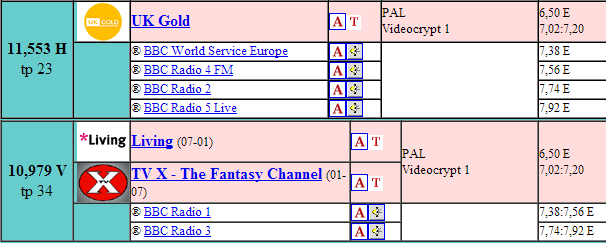
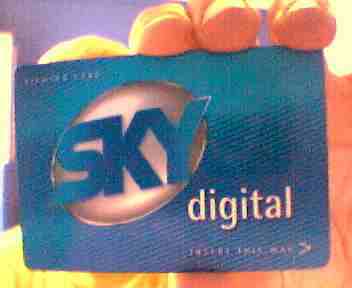 For this reason, it almost came by accident that on 1st October 1998, the new Sky Digital television service would also include lots of digital radio stations. With an abundance of capacity and the radio stations could take advantage of the MPEG2 layer III audio system (aka "MP3") and provide many radio stations in high quality stereo. The inclusion of radio stations in the channel numbers also meant that listeners could tune into radio stations without any difficult tuning issues.
For this reason, it almost came by accident that on 1st October 1998, the new Sky Digital television service would also include lots of digital radio stations. With an abundance of capacity and the radio stations could take advantage of the MPEG2 layer III audio system (aka "MP3") and provide many radio stations in high quality stereo. The inclusion of radio stations in the channel numbers also meant that listeners could tune into radio stations without any difficult tuning issues.
"Eureka"
Of course, the first "official" digital radio service developed out of the Eureka 147 project - see DAB: an introduction to the Eureka DAB System and a guide to how it works, which gave the world MPEG-1 layer II audio MPEG-1 Audio Layer II.The BBC started test transmissions of DAB in January 1990, and its national DAB multiplex went on air in 1995.
The DAB service was thought of as a way of supplying superior quality sound for the existing five BBC network radio stations. However, the very high cost of receivers, around £800 back in 1998 (£1200 in today's prices). The BBC launched digital radio in the UK in 1995 followed by national commercial multiplex operator Digital One in 1998.
"Extending Choice"
However, as early as 1992, the BBC had published "Extending Choice", which proposed that the BBC stop chasing mass audiences, and provide high quality services to audiences that the commercial broadcasters were not. This first camge to fruition in September, 1998 ( BBC News - ENTERTAINMENT - BBC unveils digital TV) when the BBC News 24, Choice and Knowledge channels were announced, and that DAB would soon have BBC Parliament (an audio service), the Asian Network and a side-channels to back-up Radio Five Live.Since then local DAB (digital radio) commercial services have become available offering non-national BBC Radio and ILR on a local basis.
Greg Dyke, the BBC DG in 2001 BBC News - TV AND RADIO - Dyke warns of digital backtrack made a decision to launch three new networks, codenamed X, Y and Z. These became 1Xtra, 6Music and BBC7 (see radio-now.co.uk )
This was a strategic decision to remove DAB from being a "sound quality" proposal to one of "listener choice". However, DAB radios still cost £300 (£420 at today's prices).
Radio Freeview
So, it was quite fortunate for these stations that the big digital terrestrial balls-up that had been ONdigital (see ONdigital Timeline - ONhistory for more) resulted in the BBC having two DTT multiplexes to fill when the replacement service Freeview launched.For quite some time, the second multiplex only carried BBC FOUR and Cbeebies, and there were plenty of bits left for all of the BBC national stations to be carried to most homes in very high quality.
As the new BBC radio stations came on air, they were also added to the digital satellite platform.
From 15 November 1999 the first national DAB commercial multiplex "Digital One" launched. This now adds another 15 national stations.
For those who are not happy with the provision of more services at lower bitrates, most UK radio stations can be listened to online at high quality. The unexpected popularity of listening to radio on Freeview has allowed many homes to sample stations that would otherwise have been exclusive to DAB. Now when people consider a DAB purchase, many "new" stations are already familiar.
The most recent figures show that 52.5% of the population tune in to digital radio every week: 65% of that is DAB, 15% on Freeview, Freesat and Sky, and 15% online. See RAJAR DATA RELEASE | QUARTER 2, 2013
How many people are listening on long and medium wave?
Due to the cuts imposed on the BBC from the Licence Fee being frozen, the BBC is looking into removing the Long and Medium Wave services.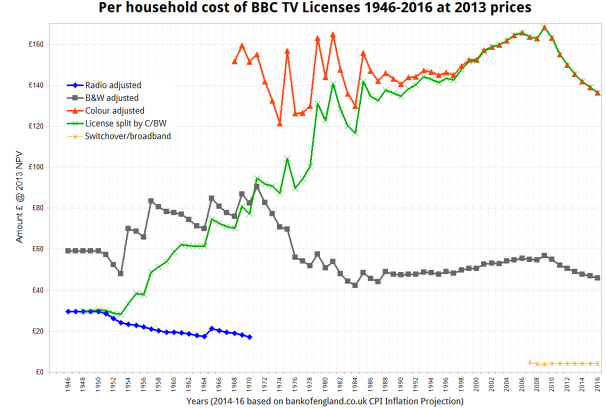
According to BBC News - BBC set to cut ... 2017 "There will also be no reinvestment in long wave, which will lead to the end of Radio 4 on LW in the long term".
"The BBC says the eventual closedown of the Long Wave service is determined not so much by the digital switchover but a dwindling supply of valves used by the Droitwich transmitter, owned and operated by Arqiva. At the last count there were only 10 left and their operating life is put at between one and 10 years" (from Will the move to digital cut off my long-wave radio? - Telegraph).
As part of the DQF process, four BBC local radio stations closed down on medium wave. At three of these there were no complaints, but at BBC Radio Mersyside, according to BBC criticised for AM radio shut-down - Media - theguardian.com 600 listeners complained.
Using this as a baseline, 600 listeners from a potential 1,664,000 (from RAJAR) pairs of ears, makes 0.0361% of the population.
If we multiply this up by 53,205,000 (that RAJAR national 16+ figure) we get 19,200.
If there are really only 19,200 people listening to long and medium wave, then it's probably time to turn off the service.
If you look at it the other way, then a service proposal to cover 20,000 people in the UK from 73 transmitters wouldn't be regarded as economic.
It may also be worth noting that if you can't get your BBC radio stations from DAB, or satellite, or Freeview, or online: it is doubtful you are paying for a TV Licence.
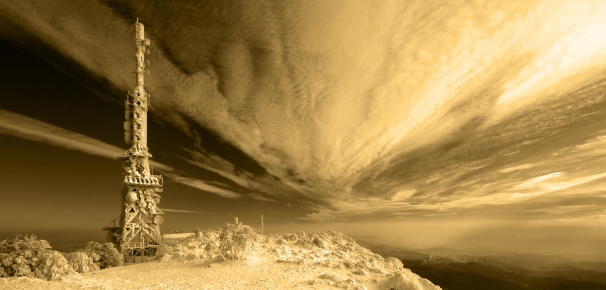
So why switch of FM/VHF?
In the last part, The end is near for analogue radio... radio gets very high - Digital radio the limited FM radio spectrum prevents the UK having more than 5 national FM stations.DAB, with just two national multiplexes provides 25 stations. There is space reserved for a second national DAB service, which could add another 15.
In London, there are an additional three DAB multiplexes adding brining the total stations to over 55. Central Scotland has 45 stations.
Over the last few years, the BBC and commercial operators have been making the DAB local radio network match the FM local radio network - Ofcom - Annex B. Local DAB build-out plans. There are still a few areas of the UK to cover - notably Derbyshire and West Wales - but both in car, and in home, DAB reception is as good as or better than FM.
But there are 758 FM transmitting masts in the UK, some carrying as many as 12 FM stations (Black Hill (North Lanarkshire, Scotland) analogue radio transmitter ) This is a considerable cost for the radio broadcasters because DAB is as low as one-sixth of the cost of FM transmission.
"Transmission will be cheaper, too. DAB can be transmitted at lower power than today's FM and AM signals yet with no loss in geographic coverage, which means less cost to the broadcaster (and less power consumption means DAB is more environmentally friendly than conventional FM and AM)." - WorldDMB - Frequently Asked Questions (FAQ)
The current plans are to announce a rolling switch off of VHF for the BBC and commercial broadcasters: the switch off will occur areas where digital radio use is highest. Community radio stations (which are not profit making) will continue on FM.
However, the recent success of the Small Scale DAB The potential for lower-cost transmitting stations in support of DAB rollout suggests that community radio could now be very cheaply provided by DAB too.
Now in 2013, you can grab a DAB radio from your local supermarket for £20 ASDA Portable DAB Radio - Radio - ASDA direct - one sixtieths of the cost in 1998, there is little standing in the way of radio choice being available in every UK home.
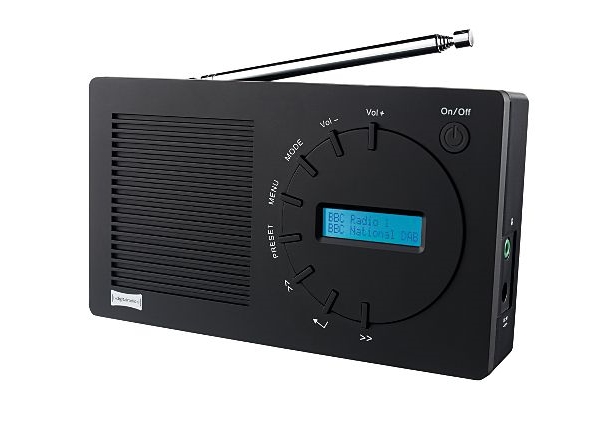
Help with TV/radio stations?
In this section
Saturday, 31 August 2013
M
Michael S1:24 AM
As I mentioned in one of the other threads... DAB coverage here in West Yorkshire already beats the equivalent FM service, including BBC Radio Leeds.... and the rollout isn't complete.
"If the BBC stop transmitting on FM I will stop listening simple as that."
- this comment made me laugh out loud.
Has Ian hasn't watched any BBC TV since DSO was completed I wonder?
Either way, I don't think the BBC will be too worried. And why go on about not wanting to listen in mono? The only stations in mono on DAB are those that are not available on any analogue platform, are currently on MW, or are speech only, so don't need stereo!
Things can only get better, but somehow methinks some people just won't accept it. Oh well, at least the rest (majority) of us can enjoy the progress.
| link to this comment |
Watch lots of bbc thanks. I will not be buying additional equipment to allow me to listen to BBC radio if they stop broadcasting on FM, the radios that are available for £20 are MONO. so it dosnt mater what is broadcast at them they will always be mono. Progress?? I don't think so more like a step back.
| link to this comment |
Ian's: mapI's Freeview map terrainI's terrain plot wavesI's frequency data I's Freeview Detailed Coverage
Tracy
8:38 PM
Ipswich
8:38 PM
Ipswich
"Sorry, I missed "FM has RDS which DAB does not support".
DAB doesn't need RDS as it's already digital!
And the main use of RDS is to distribute alternative frequency lists, which is a bit pointless for a single frequency network... "
However what RDS does do if you have a travel button on your radio is allow you to receive the most up to date travel reports via any FM station within its range. Very important for locals in rural areas.
| link to this comment |
Tracy's: mapT's Freeview map terrainT's terrain plot wavesT's frequency data T's Freeview Detailed Coverage
Tracy
8:46 PM
Ipswich
8:46 PM
Ipswich
In Ipswich the problem with DAB is that currently we only have a signal from Essex for national radio and the commercial one is a very poor weak signal (just like the freeview). This means that when traveling across the county you lose the DAB signal once past Woodbridge and won't pick up another till Oulton/Lowestoft on the A12.
AM has always been poor. It will be a while before BBC Suffolk lose the 4/5 FM signals they broadcast from and change to DAB. That's if the station survives the cuts.
| link to this comment |
Tracy's: mapT's Freeview map terrainT's terrain plot wavesT's frequency data T's Freeview Detailed Coverage
Sunday, 1 September 2013
T
tony2:32 AM
Sub heading...
So why switch of FM/VHF?
Is this vice-verser or OFF?
| link to this comment |
W
Willie Bone1:25 PM
Hello Folks, The shouting is nearly over, the government will probably announce a five year notice to the listening public for a FM shutdown for most radio services on the run up to Christmas. Audio philes like myself have already bought internet radio units for the kitchen and hifi plug ins to receive better audio quality through internet radio. I would always recommend buying internet radio with an integrated DAB tuner as back up! (Okay! DAB will become the new medium wave, eventually!)
Would it not be a good idea to phase in a DAB+ service and marry it up to the DNS technology? A bit like Freeview HD with connected tv potential on MP4 with the carriage of some MP2 services.
Freeview on MP4 may become exclusive by 2020, along with a DAB only system. So, it would be sensible to include a DAB+ phase in as part of the Culture Secretary's speech in December.
I honestly do not think analogue radio will be around by the next decade! A large chunk of FM spectrum will probably be auctioned off after 2018!
| link to this comment |
W
Willie Bone1:51 PM
Away from mainstream radio, there is also a very emotional tide about the demise of shortwave as an external radio service carrier.
Shortwave's delivery patform was under attack before the onslaught of internet radio. Domestic satellite was already starting to carry studio quality versions of short wave radio broadcasters at 96kbps (MP2) mono. WRN still carries public service broadcasting output on satellite to the UK, sourced from China, Russia, Korea, most of Europe and elsewhere.
Now internet radio is bringing in stereo versions of the Voice Of Russia, Voice Of America and China Radio International. A dream come true from the far off days of listening to cold war radio in the 1960s through to the 1980s.
The shortwave diehards of today love shortwave as other people appreciate steam navigation and steam locomotion! They know deep down that shortwave has not a place in the modern world!!
| link to this comment |
M
michael7:54 PM
Mark, I would be delighted to see the Ofcom coverage maps for North Devon you refer to. Please provide a link to what you have found. What I have found promises zilch for low-lying and coastal areas, now or in future. I do hope you are right. A lot of not-so-young listeners - which one fine day will include little me - depend on local radio. The BBC and Ofcom seem to favour the young and affluent new-tec generation. "There is currently only one local DAB transmitter on-air in North Devon but the Ofcom map shows many more than this for the DSO position."
| link to this comment |
michael: The coverage map (planned) is thus:
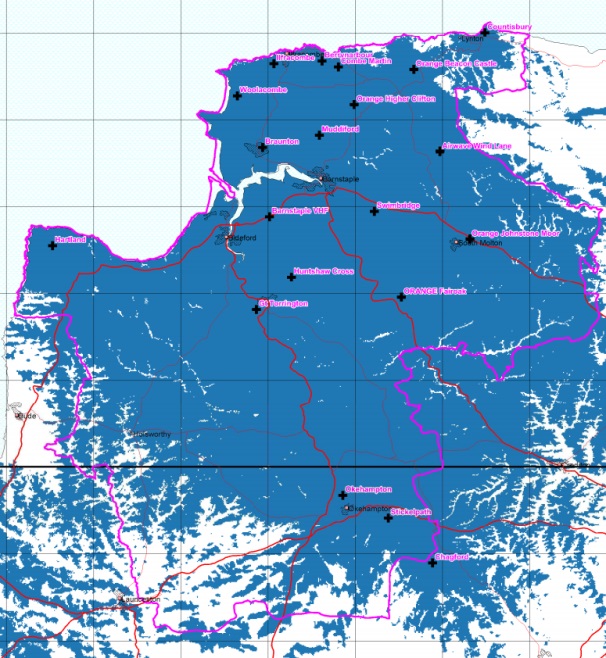
from
http://stakeholders.ofcom….pdf
it only has one transmitter at the moment
Details of 10C_South_East_Devon DAB multiplex | ukfree.tv - 11 years of independent, free digital TV advice
| link to this comment |
The list of sites, as the diagram is a bit hard to read:
Huntshaw Cross
Ilfracombe
Okehampton
Braunton
Woolacombe
Swimbridge
Barnstaple
Countisbury
Stickelpath
Hartland
Orange - Johnstone Moor
Gt Torrington
Berrynarbour
Orange - Beacon Castle
Airwave - Wind Lane
Combe Martin
Muddiford
Orange - Higher Clifton
Orange - Fairoak
Chagford
| link to this comment |
Select more comments
Your comment please!